
Wool Omnibus Edition
by
Hugh Howey
Published 5 Jun 2012
Of loamy soil turned over, releasing all those tangy molecules into the air. She stopped on thirty—the hydroponic farms—and tried the doors. It was dark inside. There was a sound down the hallway, the whir of a fan or a motor. It was a strange encounter, this small noise. For over a day, she had heard nothing but the sounds she made herself. The green glow of the emergency lights were no company; they were like the heat of a dying body, of batteries draining with the leak of photons. But this was something moving, some sound beyond her own breathing and footfalls, and it lurked deep in the dark corridors of the hydroponic farms. Once again, she left her only tool and defense behind as a doorstop to allow in a trickle of light.
…
Jahns thanked him. Most of the porters looked familiar to her, having seen them over and over as they delivered throughout the silo. But they never stayed in one place long enough for her to catch and remember a name, a normally keen skill of hers. She wondered, as she and Marnes entered the hydroponic farms, if the porters made it home every night to be with their families. Or did they even have families? Were they like the priests? She was too old and too curious not to know these things. But then, maybe it took a day on the stairwell to appreciate their job, to fully notice them. The porters were like the air she breathed, always there, always serving, so necessary as to be ubiquitous and taken for granted.
…
She could somehow still smell the fetid soup on her, could taste the stomach acid from her retching. She needed water. She needed clothes. These primal urges were pushed to the forefront, drowning out the severity of her situation, the daunting tasks before her, leaving the regrets of the past behind. If the layout was the same, the first hydroponic farm would be four floors below. The larger of the two upper dirt farms would lie just below that. Juliette shivered from an updraft of cold air. The stairwell was creating its own thermal cycle, and it would only be colder the further down she went. But she went anyway—lower was better. At the next level, she tried the door.

Demystifying Smart Cities
by
Anders Lisdorf
Today we see rooftop gardens in some cities, but we might expand on this idea and also increase the use of vertical gardens, which will also help clean the air and give a more pleasant ambience of the city. Hydroponic farms are already now being built out and could produce a significant amount of fresh produce close to the people of the city that need it and thereby minimizing the need for transportation. Imagine that every building had its own hydroponic farm operated by robots that harvested and prepared salads for its inhabitants to purchase in a vending machine at the bottom on their way out for lunch or on their way home for dinner.
…
These cities will not have nearby farms where you can go to buy apples or distribution centers from where you can get a new computer delivered next day through a carrier service. Virtually everything needs to be produced and recycled within the context of the city. In the future cities in space, we have to be able to produce our own food. Not only do we need hydroponic farms but also advanced gene editing solutions. We can’t bring the seeds of all the crop we want, and we can’t foresee what traits are needed to be strengthened in the new surroundings. If a crop starts to fail, we can’t just order another. Similarly, humans may find themselves with other nutritional needs that their crops have to supply.

A New History of the Future in 100 Objects: A Fiction
by
Adrian Hon
Published 5 Oct 2020
Wing was one of six American crewmembers on board Nautilus-1 when it departed from Earth orbit in 2025. Many scientists were skeptical about the crew’s ability to remain psychologically healthy while cooped up in a vessel for two years, but their living conditions were without doubt far superior to those faced by explorers from previous centuries. They had fresh food provided by a hydroponic farm, a centrifuge so they could exercise and sleep under gravity (thus avoiding muscle atrophy and bone density loss), constant video communication with their loved ones on Earth, and effectively unlimited VR entertainment. It was hardly a grueling ordeal, but it wasn’t without mishap. Six months into the voyage, the ship’s controlled ecological life-support system, Plant-Lab, malfunctioned, requiring the crew to resort to mechanical carbon dioxide scrubbers to keep the cabin atmosphere clean.
…
The Burj Al Shams projected a gleaming high-tech and environmentally friendly image; it even contained its own wind turbines and power generators, with smart climate control systems. There was just one problem: the Burj Al Shams sat in the middle of a desert with vast amounts of empty land nearby. No amount of on-board power generation and hydroponic farms could produce true self-sufficiency, meaning that the so-called arcology was still reliant on outside resources, which raised the question, why bother with a skyscraper when low or medium-rise buildings would have been cheaper? And for that matter, was a truly self-sufficient building with residents living, working, sleeping, and shopping all in the same space even a desirable thing?
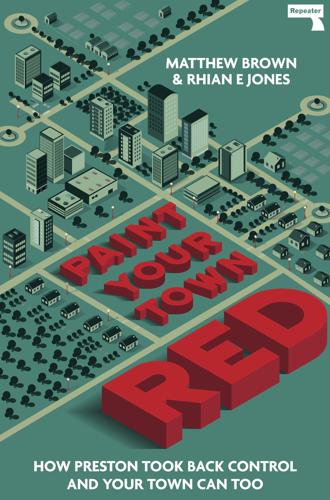
Paint Your Town Red
by
Matthew Brown
Published 14 Jun 2021
This strategy created 5,000 jobs from Cleveland’s hospital network alone, and in 2018 the Evergreen Cooperative Laundry took over operation of Cleveland Clinic’s industrial laundry from the private agency Sodexo, winning a bidding process that included proposals from far bigger national and international companies. This enabled them to triple their number of employees, whose wages will also be 15% higher than under the previous operator. They also helped set up a solar power company, an industrial laundry, and a city-centre hydroponic farm growing vegetables and herbs. All three enterprises were owned by their employees, with some of their profits going to a holding company tasked with establishing more cooperatives in the city. A fund was recently established to bring about the conversion to employee ownership of already existing businesses — an easier and less risky process than building viable new cooperative enterprises from scratch.

What We Need to Do Now: A Green Deal to Ensure a Habitable Earth
by
Chris Goodall
Published 30 Jan 2020
Ranging from red amaranth leaves to pea shoots and wild rocket, the produce is grown in trays that are stacked from the floor to the ceiling. Using powerful LEDs to provide high levels of reddish growing light and nutrient-filled water flowing through the trays, the plants can be grown quickly, without weeding or pesticides. ‘Hydroponic’ farms like this are, of course, completely unaffected by the weather on the ground above them, and produce can be grown throughout the year. The salad and herbs are harvested just weeks after sowing and sold through the large supermarket chains. A similar approach, on a far larger-scale approach, is employed by the Jones Food warehouse in Scunthorpe, which grows a mixture of herbs and green leaves.
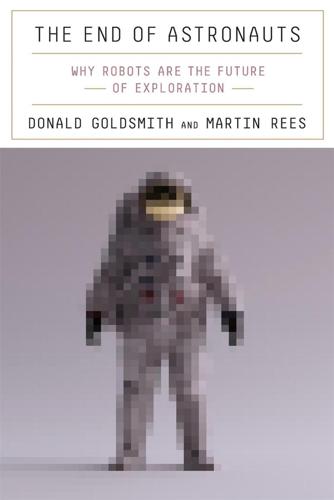
The End of Astronauts: Why Robots Are the Future of Exploration
by
Donald Goldsmith
and
Martin Rees
Published 18 Apr 2022
Imaginative solutions for the return-journey requirement include finding volunteers who would remain at their destination instead of returning (apparently no shortage exists within the wider community, if not among those likely to be chosen as astronauts) or bringing machinery to extract fuel or oxygen (or both) from another planet’s soil (hydroponic farming, as seen in The Martian, would presumably have to wait for at least a second journey). For the present, the likely solution would mimic Apollo’s: send the major vehicle into orbit, and use a smaller one to descend to, and ascend from, the surface. This approach should work as well around Mars as around the moon; its drawback lies only in the extra mass for the entire transport system.

Lonely Planet Singapore
by
Lonely Planet
Published 14 May 2024
To address this vulnerability, the Singaporean government has devised a '30 by 30' strategy, which aims to see 30% of the island's nutritional requirements produced locally and sustainably by 2030. This approach focuses on enhancing fruit and vegetable production through urban-farming initiatives. These include hydroponic farms atop buildings, local neighbourhood farms, and indoor multistory LED vegetable farms Singapore's tech industry is playing a pivotal role in advancing alternative-protein projects, and aims to position the country as a global leader in this field. The government is also fostering innovation and entrepreneurship in the sector, and at least 36 alternative-protein companies based in the city have collectively raised more than US$213 million in funding.

The City and the Stars / The Sands of Mars
by
Arthur C. Clarke
Published 23 Oct 2010
Still, I’d better not tell you about that or you’ll be writing it all up in the papers.” “I don’t write for that sort of newspaper,” retorted Gibson, sipping thoughtfully at the local brew. It wasn’t at all bad when you got used to it, though of course it was completely synthetic— the joint offspring of hydroponic farm and chemical laboratory. The bar was quite deserted, for at this time of day everyone in Port Lowell would be hard at work. Gibson pulled out his notebook and began to make careful entries, whistling a little tune as he did so. It was an annoying habit, of which he was quite unconscious, and George counterattacked by turning up the bar radio.
…
Now let’s walk over and look at the farm.” The name was a singularly misleading one for the big food-production plant filling Dome Three. The air was quite humid here, and the sunlight was augmented by batteries of fluorescent tubes so that growth could continue day and night. Gibson knew very little about hydroponic farming and so was not really impressed by the figures which Mayor Whittaker proudly poured into his ear. He could, however, appreciate that one of the greatest problems was meat production, and admired the ingenuity which had partly overcome this by extensive tissue-culture in great vats of nutrient fluid.

Rendezvous With Rama
by
Arthur C. Clarke
Published 27 Jun 1973
It was their own joke that, if the sun ever showed signs of going nova, they would contract to get it under control - once the fee had been settled. It was a non-Hermian joke that any child who showed signs of interest in art, philosophy or abstract mathematics was ploughed straight back into the hydroponic farms. As far as criminals and psychopaths were concerned, this was not a joke at all. Crime was one of the luxuries that Mercury could not afford. Commander Norton had been to Mercury once, had been enormously impressed - like most visitors - and had acquired many Hermian friends. He had fallen in love with a girl in Port Lucifer, and had even contemplated signing a three-year contract, but parental disapproval of anyone from outside the orbit of Venus had been too strong.
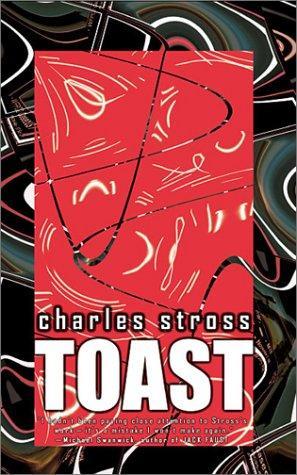
Toast
by
Stross, Charles
Published 1 Jan 2002
He nearly bites his tongue, because there are more than three worlds out there, and he’s been to at least one of them: the bolt-hole on XK-Masada, built by the NRO from their secret budget. He’s seen the mile-high dome Buckminster Fuller spent his last decade designing for them, the rings of Patriot air defense missiles. A squadron of black diamond-shaped fighters from the Skunk Works, said to be invisible to radar, patrols the empty skies of XK-Masada. Hydroponic farms and empty barracks and apartment blocks await the senators and congressmen and their families and thousands of support personnel. In event of war they’ll be evacuated through the small gate that has been moved to the Executive Office Building basement, in a room beneath the swimming pool where Jack used to go skinny-dipping with Marilyn.

Infinite Detail
by
Tim Maughan
Published 1 Apr 2019
Curried with thick, sweet spices. Turmeric, cumin, chili; words he hears Grids’s boys whisper on the corners. Rice sits in a half-full pan. Clean, white, sticky. He fights the urge to jam his hand in and force it into his mouth. He can’t remember the last time he saw rice. He knows where the spices are from—the hydroponic farms in the old buildings at the back of the Croft, the ones left over from before, the ones the old hippies used to grow their vegetables before the crash. When Grids took the Croft he put them all over to growing ganja, until he realized he could get a higher price growing herbs and spices—the things the Land Army didn’t provide through their tightly controlled rationing, the things everybody wanted.
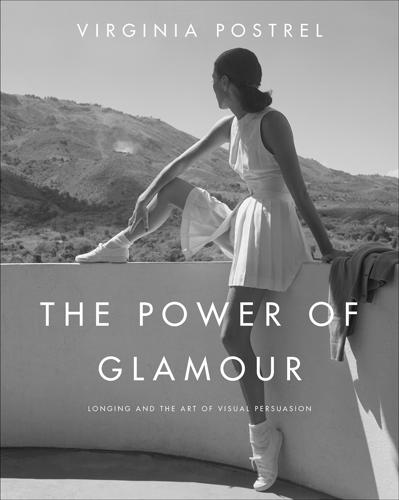
The Power of Glamour: Longing and the Art of Visual Persuasion
by
Virginia Postrel
Published 5 Nov 2013
The designer used his considerable theatrical talent to draw visitors into an alluring version of 1960. Seated in special “sound chairs,” fairgoers flew over a meticulously realized American landscape, with lighting adjusting to signify the passage of time. Looking through “airplane windows,” they saw mountains and valleys; industrial parks, electric dams, and hydroponic farms; skyscrapers, stores, and houses; airports, railroads, and “ten thousand moving cars on the superhighways of tomorrow.”64 The young protagonist of E. L. Doctorow’s semiautobiographical novel World’s Fair (1985) describes the experience: No matter what I had heard about the Futurama, nothing compared with seeing it for myself: all the small moving parts, all the lights and shadows, the animation, as if I were looking at the largest most complicated toy ever made!

Hooked: Food, Free Will, and How the Food Giants Exploit Our Addictions
by
Michael Moss
Published 2 Mar 2021
The teacher Stephen Ritz sees this dynamic regularly at the public school in the Bronx where he has won national awards for his class on food. His students arrive with limited culinary experiences, and leave being able to tell the cilantro from the parsley they grow themselves. Their classroom has a hydroponic farm, and the day I was there, they made vegetable dumplings from their crops. But their journey to and from school is through a minefield of corner stores, where, for a mere dollar, they can get three hundred calories of junk. Observing his students has left Ritz convinced that one of the strongest disablers of the brake in our brain is the ultra-convenience (speed) of processed foods.

Wireless
by
Charles Stross
Published 7 Jul 2009
He nearly bites his tongue, because there are more than three worlds out there, and he’s been to at least one of them: the bolt-hole on XK-Masada, built by the NRO from their secret budget. He’s seen the mile-high dome Buckminster Fuller spent his last decade designing for them, the rings of Patriot air-defense missiles. A squadron of black diamond-shaped fighters from the Skunk Works, said to be invisible to radar, patrols the empty skies of XK-Masada. Hydroponic farms and empty barracks and apartment blocks await the senators and congressmen and their families and thousands of support personnel. In event of war they’ll be evacuated through the small gate that has been moved to the Executive Office Building basement, in a room beneath the swimming pool where Jack used to go skinny-dipping with Marilyn.

End of the World Blues
by
Jon Courtenay Grimwood
Published 24 Sep 2006
The voice came from an alcove, where a marble statue glared at the floor of a corridor few even knew existed. The corridor was wider than it was tall, windowless and lit with flickering globes set into a low ceiling. Lady Neku sneezed—dust had that effect on her. A simple maintenance duct under a hydroponic farm, before title inflation hit High Strange and the farm became the Stroll Gardens and the duct acquired statues, the metal tube ran the entire length of a bigger spur, from one side of the ring all the way through to the other. Doors sealed the duct where it left the spire, clumsy welds holding them in place, though these looked newer than the seamless joins found on most doors leading off the maintenance tunnels.
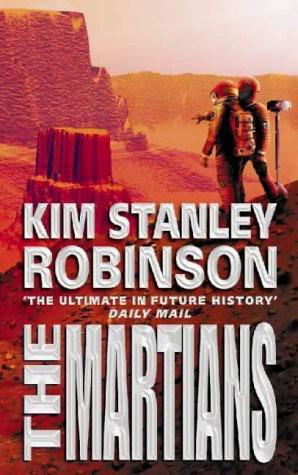
Martians
by
Kim Stanley Robinson
Published 6 Jul 1999
They noted that records showed he had had an interview with Natasha the day before the fight, and asked what they had talked about, and if he could please share his notes on the meeting, which he declined to do for reasons of professional confidentiality. Natasha Romanova: very beautiful. Magnificent posture. The calmest Russian woman I have ever met. Biologist, working in hydroponic farming. Met Sergei Davydov and fell in love with him here in the camp. Very happy now. But everyone knew he had been involved with the investigation of the incident, and naturally they must have discussed the fact that he was testing and judging them. And keeping records of course. Mary no longer pressed his leg with hers, if she ever had, nor even sat next to him.

More: The 10,000-Year Rise of the World Economy
by
Philip Coggan
Published 6 Feb 2020
It sells its wares to small farmers, but also to non-profit customers like food banks and shelters that have mandates to provide employment for the people they help. Universities and schools use the container farms for student engagement. And it is the kind of company that creates enthusiasm in its employees; hence the willingness of my guide, Caroline Katsiroubas, to drive through a blizzard to show me round on such a dismal day. Hydroponic farms are a mini-wonder of the world. Although not quite the Hanging Gardens of Babylon, the Hanging Gardens of Boston are still a technological marvel. They can be used to grow food in some very inhospitable climates – a similar venture operates in Alaska, north of the Arctic circle, where fresh produce can take a week to arrive.1 At the moment, the cost of power means vertical farms are suitable for producing only high-value produce.

Hope Dies Last: Visionary People Across the World, Fighting to Find Us a Future
by
Alan Weisman
Published 21 Apr 2025
But that November, all the answers they’d prepared over months of questions from the Emirates’ sheikhs paid off when they signed a memorandum of understanding with Busan, South Korea, the port from which Samsung, Hyundai, and LG products flow to the world. The initial 15.5-acre prototype in Busan’s protected harbor would be three triangular platforms. One would be a research center, including a hydroponic farm. The second would accommodate visitors, with an eco-lodge hotel, eco-retail outlets, and an organic restaurant at the waterfront’s edge—possible, they said, because unlike buildings along the shore, it could never flood. The third platform, with six multistory hexagonal residential buildings of varying heights, would house 12,000, and be scalable to 100,000.
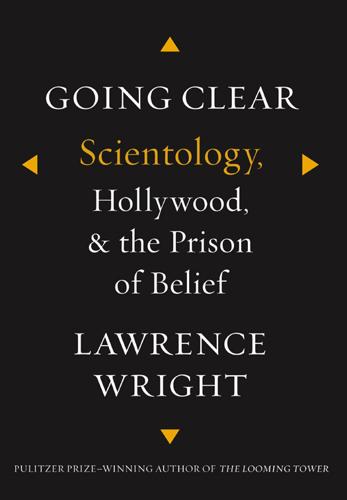
Going Clear: Scientology, Hollywood, and the Prison of Belief
by
Lawrence Wright
Published 17 Jan 2013
Wrigley and Gablehouse set up in the Hôtel La Tour Hassan, where diplomats typically stayed. Wrigley became friendly with an African envoy and drifted off to the Ivory Coast, leaving Kit to secure Morocco by herself. She established an office titled the American Institute of Human Engineering and Development, and sold a project to develop hydroponic farming to the Moroccan government. That project went nowhere, but it gave her legitimate cover. With her social skills, she soon found herself hobnobbing with the royal palace’s inner circles—in particular, she made friends among some high-ranking military officers, including a tall, handsome intelligence officer named Colonel Allam.

The mote in God's eye
by
Larry Niven; Jerry Pournelle
Published 30 Jan 2011
I'll need three secretaries, Uncle Ben's not going to be any use, and we've got to arrange for a reception for the Moties and- Oh, all right. Where were we?" 47-Homeward Bound Kutuzov and Mikhailov went all out in preparing for Rod and Sally's farewell dinner party. Lenin's cooks worked all day to turn out a traditional Ekaterina banquet: dozens of courses, soups, pastries, roasts, stuffed grape leaves from the hydroponics farm, shish kebab, an endless stream of food; and between courses there were thimble glasses of vodka. It was impossible to talk during the meal, for as soon as one course was finished MacArthur's stewards brought another; or, to give a respite for digestion, Lenin's Marines performed dances transported from the Russian steppes to St.

NeuroTribes: The Legacy of Autism and the Future of Neurodiversity
by
Steve Silberman
Published 24 Aug 2015
Slan shacks with names like Oblique House, the Epicentre, Station X, the Ivory Birdbath, Prime Base, and Tendril Towers popped up all over the United States and the United Kingdom. A scheme was hatched to transform a whole city block of Los Angeles into a full-fledged Slan Center, complete with prefab housing units, hydroponic farms, and communal publishing facilities. Degler claimed that the owner of a large ranch in Arizona had granted the Cosmic Circle permission to initiate rocketry experiments there after the war, so that his star-begotten cohorts could get down to the business of turning extravagant fiction into cold fact.

Britain at Bay: The Epic Story of the Second World War: 1938-1941
by
Alan Allport
Published 2 Sep 2020
This was months after the Big Blitz had ended. The new deep shelters, capable of holding 8,000 people each, were finished in time to shield some Londoners from the pilotless V-1 and V-2 attacks at the end of the war. Otherwise they played no part in events. They are still there to this day, used for everything from hydroponic farming to archival storage to occasional sets for episodes of Doctor Who. Few images are as redolent of the Blitz as those of weary men, women and children camping down for the night on Underground platforms. Yet only a minority of Londoners ever sheltered in the Tube. Surprisingly few used formal shelters of any kind.

Voyage
by
Stephen Baxter
Published 23 May 2011
Should we go back to the Moon and start mining it for minerals? Or maybe we should capture an asteroid, push it toward the Earth, and mine that. Maybe we can build colonies at the libration points of the Earth-Moon system. Maybe we should have factories in space, making crystals, or drugs, or perfect, seamless metal spheres. Maybe we could build huge hydroponic farms in space, where the sun always shines. Or maybe we ought to put up square miles of solar arrays, for clean power. Maybe we could mine the Earth’s upper atmosphere for lox…” NASA wasn’t short of visionaries, and new ideas, and proposals of all sorts. But there was no unity. Historically, NASA as an organization was lousy at long-range planning; fragmentary ideas and plans came bubbling up from the bottom, from the centers, and almost all of them fell afoul of turf wars.

Seveneves
by
Neal Stephenson
Published 19 May 2015
The normal up/down cycle of launch and reentry had, of course, been suspended. Things were supposed to go up, but not come down. Those orbital modules could be preserved and used as habitats, or for storing supplies. The “trash” could be picked over and used again. Bags of fecal material could become fertilizer in hydroponic farms. Ivy made a unilateral decision that they would carve out an exception to that new policy. The deceased were moved into an empty orbital module docked at the truss. This was left open to space, so that freeze-drying of the bodies could happen out of sight and out of mind. When it filled up with dead people, they would have some kind of ceremony, the thing would be deorbited, and they would watch in silence as it drew a white-hot streak across the atmosphere below.
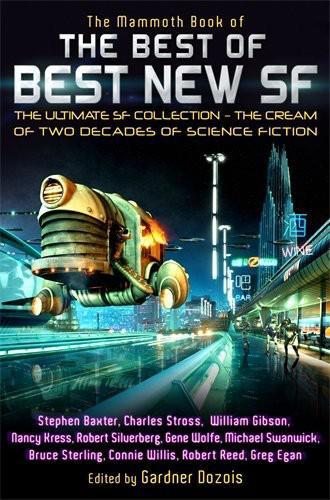
The Best of Best New SF
by
Gardner R. Dozois
Published 1 Jan 2005
They came for him that night, but he was awake and dressed, counting off the minutes until his little bundle of surprises started to unpack itself. There were two of them, armed with tasers and sticky foam canisters. The spy blinded them with homemade capsicum spray (he’d stolen chilli pods from one of the hydroponic farms and suspended a water extract in a perfume spray) and killed them as they blundered about, screaming and pawing at their eyes. One of them was Marla, another a well-muscled policeman who must have spent a good portion of each day in a centrifuge gym. The spy disabled the sprinkler system, set fire to his room, kicked out the window, and ran.

Lonely Planet Brazil
by
Lonely Planet
Restaurante Zé MariaSEAFOOD$$$ (map; %81 3619-1258; www.pousadazemaria.com.br; buffet R$230; h7am-10pm Wed & Sat) Located inside the hotel of the same name, this high-end restaurant is famed Brazil-wide for its over-the-top, all-you-can-eat R$230 seafood buffet spectacle on Wednesday and Saturday evenings (reservations essential). Owner Zé Maria catches a good amount of the fish himself. Most of the vegetables on the plates here – and indeed served in other restaurants around the island – come from the hotel’s impressive hydroponic farm. TricolorBRAZILIAN$$$ (map; %81 3619-1286; www.restaurantetricolor.com; BR 363, Vila do Boldró; mains for 2 R$120-220; hnoon-9:30pm) Run by a hardworking husband-and-wife team, this simple open-air place on the main road in Boldró offers tasty Bahian home cooking at reasonable prices. The menu is small and mostly seafood, with moquecas (fish cooked in a clay pot) and rice dishes specialties.

Frommer's Caribbean 2010
by
Christina Paulette Colón
,
Alexis Lipsitz Flippin
,
Darwin Porter
,
Danforth Prince
and
John Marino
Published 2 Jan 1989
It fronts a powdery beach of white sand and evokes the architecture of nearby Cap Juluca. For privacy and seclusion, CuisinArt challenges Covecastles. A complex of whitewashed villas crowned by blue domes and surrounded by lush tropical foliage, it seems straight out of M ykonos. The resort offers the first-ever hydroponic farm and the only full-ser vice r esort spa in Anguilla. ( Their milk-and-honeyalmond scrub is the most fantastic we’ve experienced.) It also features an herb garden, an orchid solarium, and a rare plant house. The Hydroponic Café’s daily lunch features the farm’s fresh vegetables in salads and other light far e.